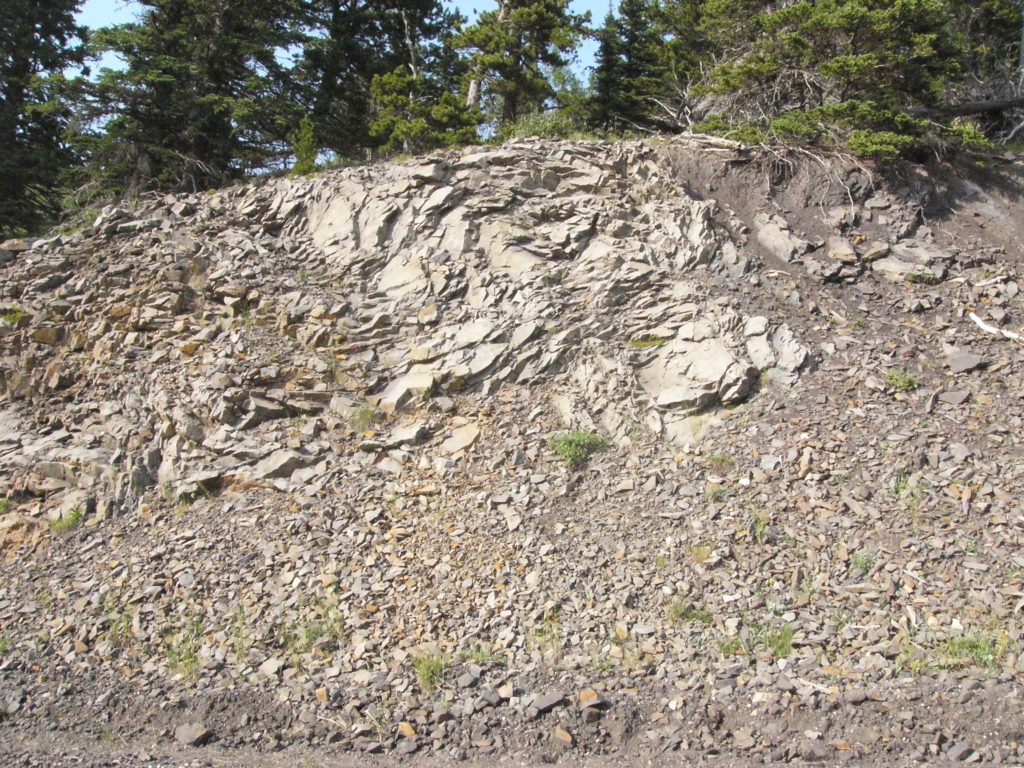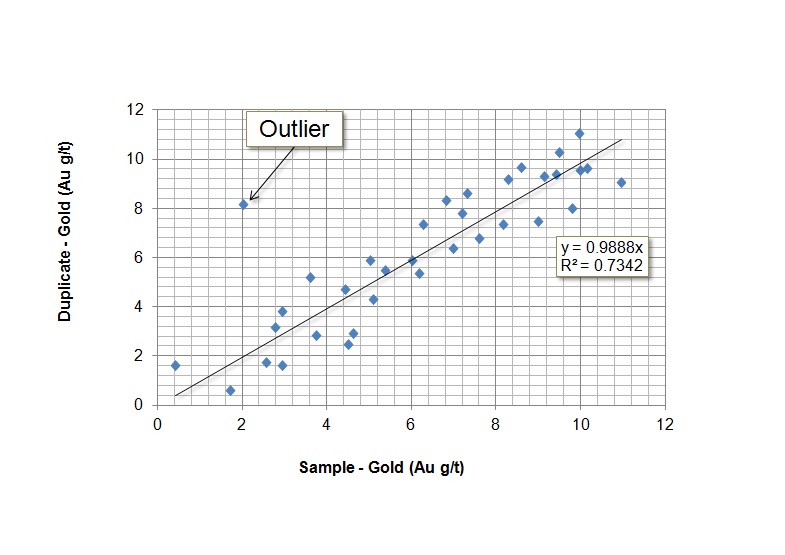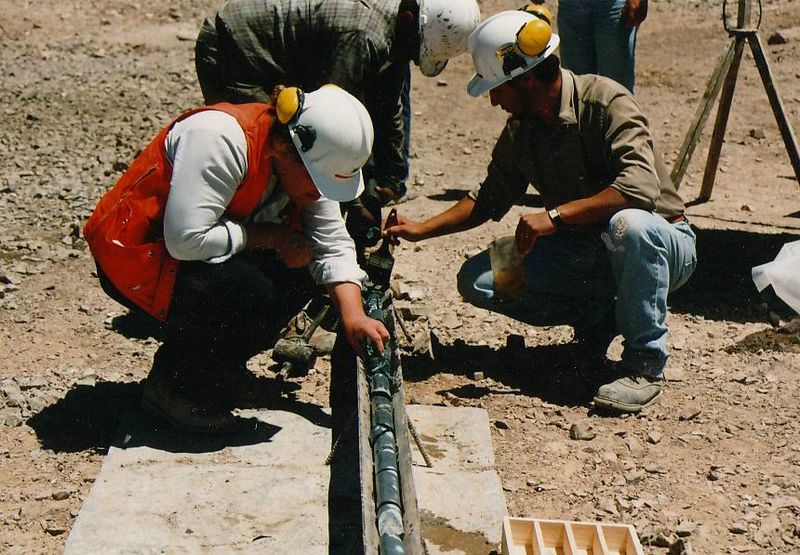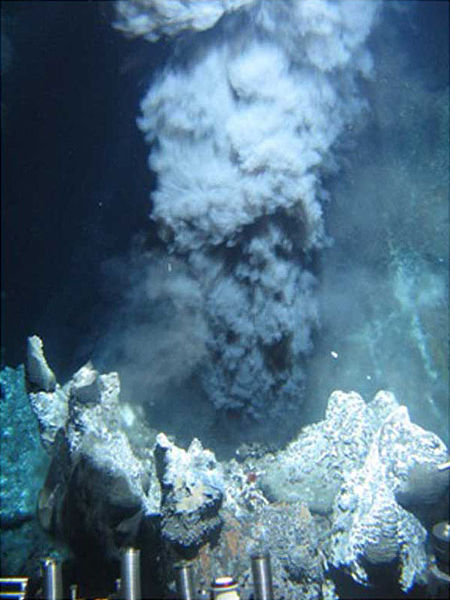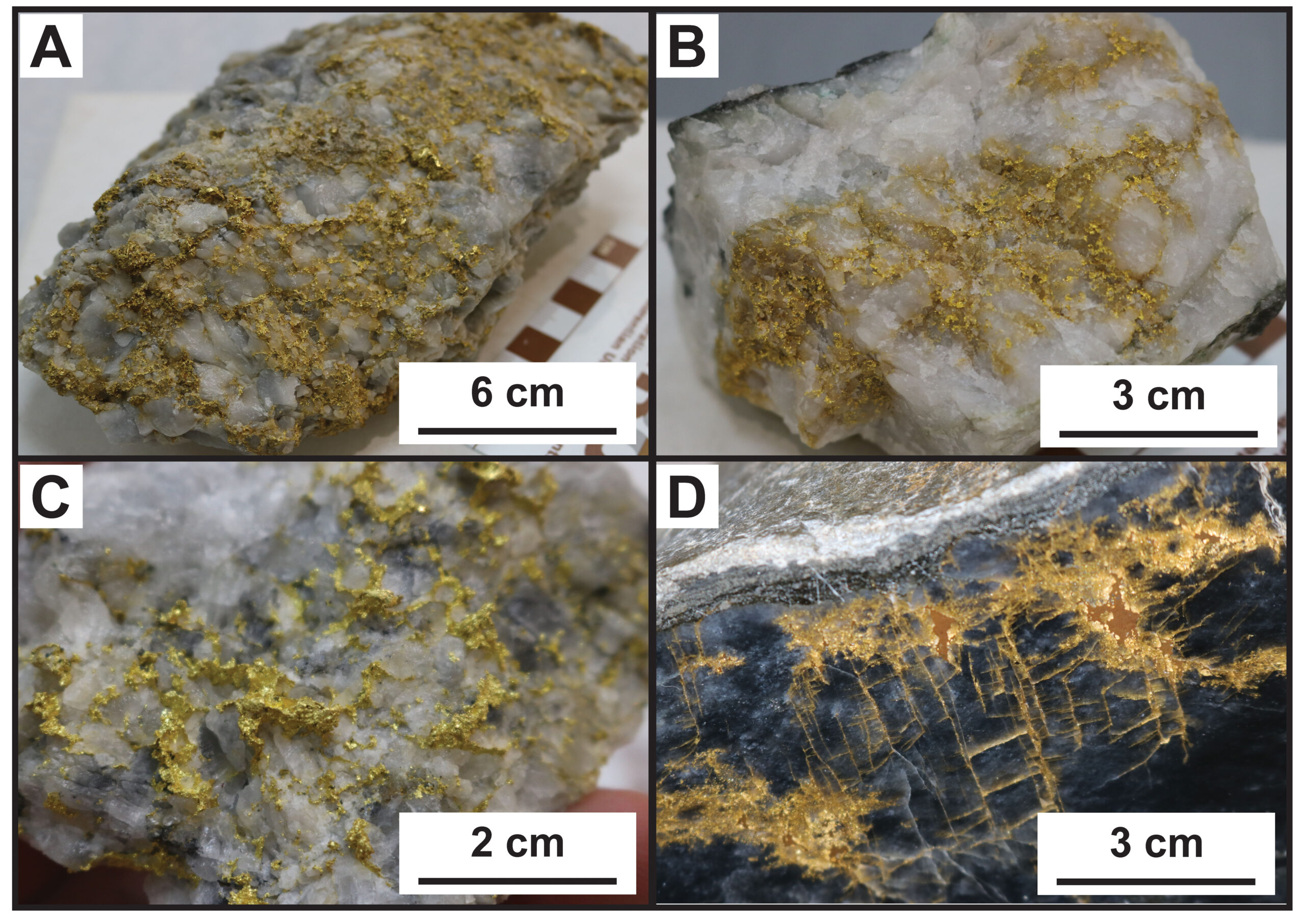One of the first things to recognize in the mining industry, is that all that glitters may not be gold. I’m not talking about the time the CEO of a junior exploration company picked up drill core freshly drilled from the corebox and called a zone of pyrite the best core he’d ever seen (it was if you like shiny things). No, this is nature playing tricks on us. The core will assay 44 kilos of gold per tonne in 1 metre and 0.1 g/t per tonne the next. What’s even more frustrating, from the authors own personal experience, is when core is first assayed by one technique and then re-assayed by another and the gold disappears. What happened? Did the assayer pocket that 5 grams of gold? Nope. There was a gold nugget, it was assayed the first time, and now it’s gone for the second assay. Welcome to the Nugget Effect.
The Nugget Effect simply is the product of the clustering of metals in a given deposit. Where metals are very tightly clustered (nuggety), then finding the nugget will give a wild overestimation of the amount of metal, inversely missing it will underestimate the amount of metal. Gold, and PGE’s are particularly susceptible to this as they are not reactive and are not commonly found combined with ore forming minerals. Moreover, many of the mechanisms of gold deposit formation are prone to irregular deposition in time and space. Unlike a porphyry copper deposit, where vast volumes of fluid move through the rock and distribute mineralization widely in fracture sets and as replacement of rock forming minerals, gold in mineral deposits tends to be formed in where the exact conditions are right to precipitate gold from hydrothermal fluids. In vein deposits this can be particularly pronounced when veins kink and bend, forming or removing spaces for gold to precipitate. The inevitable result is masses of gold nuggets in very specific locations and very sterile gangue everywhere else. Another class of nuggety gold deposits are placer and paleo-placer deposits. Unlike veins, these deposits have been sorted by water so nuggets of different sizes will be found in different areas, associated with different sizes of sediments. However, as any 49’er could tell you, gold will be deposited in very specific points in the fluvial system with large areas of barren gravel in between.
The final twist is presence or absence of actual nuggets. Fine gold particles while they can and will cluster, are more likely to be more distributed in throughout a deposit. So 10 grams of gold particles are more likely to be distributed throughout a given area. A 10 gram nugget, while technically the same occupies a tiny area and requires a much larger amount of material to be found.
However, nature being capricious, we have to learn to live with it. Fortunately there are techniques to deal with this. One of the most common is called “cutting” or “capping”. This is where all gold values that exceed a statistically defined threshold are not recorded beyond that threshold. If the cut or cap is determined to be 10 g/t Au, then all values that exceed 10 g/t Au will be considered equal to 10 g/t Au for mine planning and reporting purposes. Uncapped values will raise the cut-off grade and give a false impression of the total amount of metal available for mining. Capping/cutting, can reduce the total predicted metal substantially with drops of 25% versus uncapped/uncut not uncommon.1 This is technique used where the geology is well understood or a resource is being modeled. It needs a fairly substantial data-set for the statistics to be effective.
In early stage exploration there is simply not enough data to build a statistical model. Hence assays are generally left uncapped which can make for some wild numbers, though shorter intersections are more common than longer. This where assay lab protocols are critical, and skipping a step like, not thoroughly cleaning between assays can lead to overestimation of the amount of gold. Also, if the deposit is suspected to be nuggety then, large samples should be taken as it reduces the risk of missing the nugget.
For deposits in production the issue is not how to account for the variability in drill core, but maintaining production targets, to deliver steady returns. In the old days it was not unknown for certain high grade areas to be set aside, and only mined near the end of the quarter. More drastically, in one case, all the special high grade specimens the mine geologists had collected over the years were thrown into the mill.

However, that is a one time solution, and some month to month production variability should be expected. A few techniques to control the variability again are to take basic steps, like cleaning the floor of the stope so that the fine gold is not lost, or have a low grade stockpile so that any miss-classified ore is processed eventually. It is not unheard of for these stockpiles to have a mean grade 50% higher than predicted due to nugget effect. One critical factor is drilling, and lot of it. One calculation was that mine producing at 800 tonnes a day required 30 kilometres of annual drilling to define the resources for the next year.2 Equally important is the team working the mine and from stope geologist to mill superintendent each person has to be focused on grade control and rigorous prevention of dilution.
So the nugget effect can be reduced at each step of the process. Many a successful deposit from Bralorne to Brucejack has been built despite the nugget effect. However, if it’s not accounted for look for vanishing ounces, idle mills, broke investors, and few a brazen nuggets at the root of the problem.
1 William E. Roscoe, Ph.D., P.Eng. Cutting or Capping of High Assay Values available online here
2 Dominy SC. Predicting the unpredictable–evaluating high-nugget effect gold deposits. Mineral Resource and Ore Reserve Estimation; Australasian Institute of Mining and Metallurgy: Melbourne, Australia. 2014:659-78.

